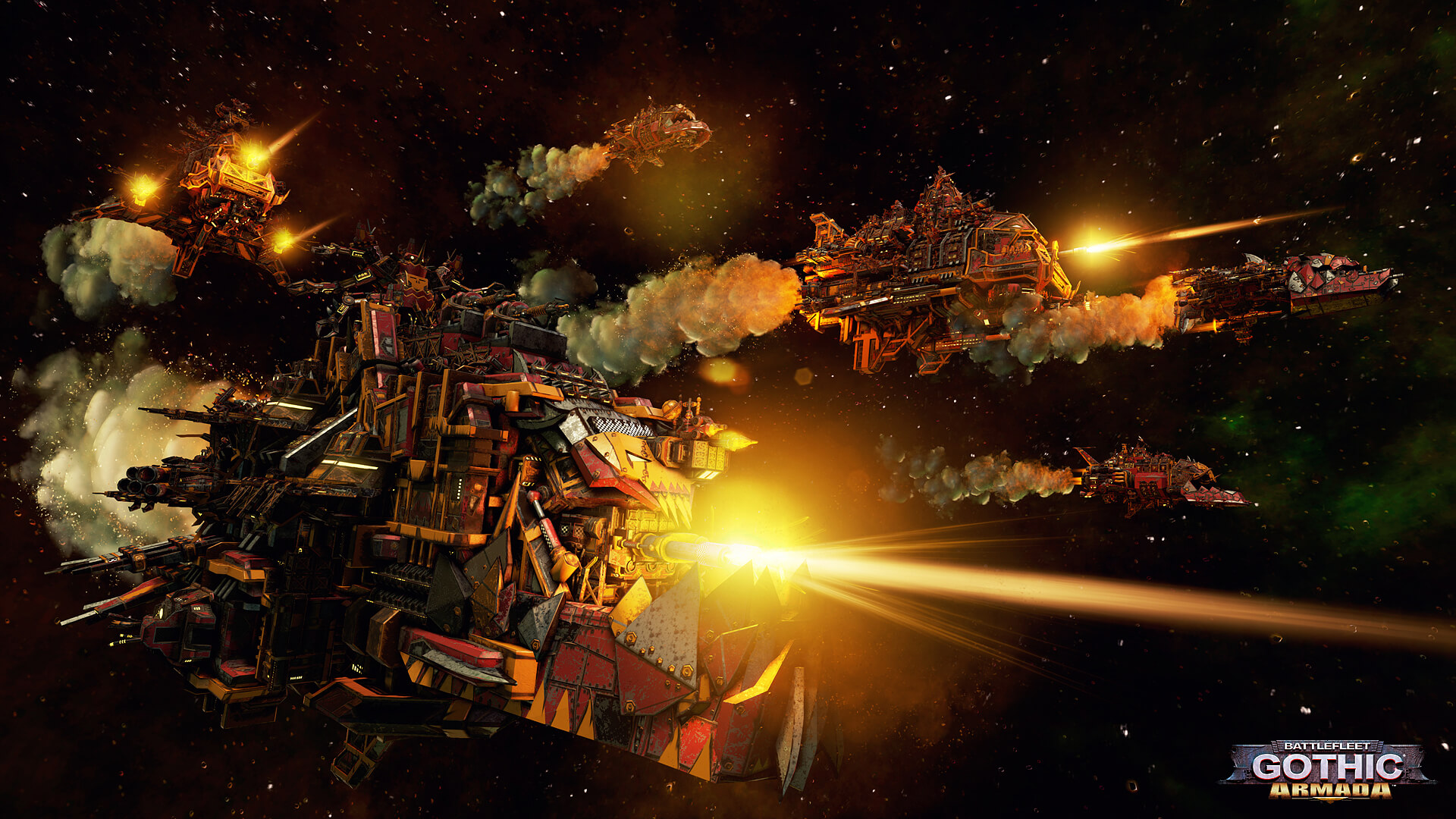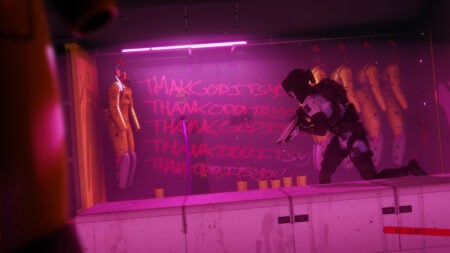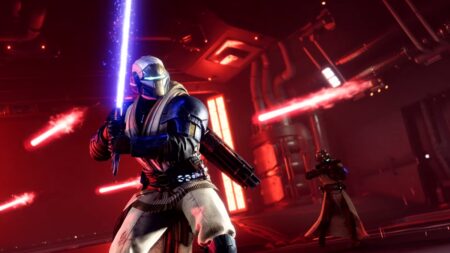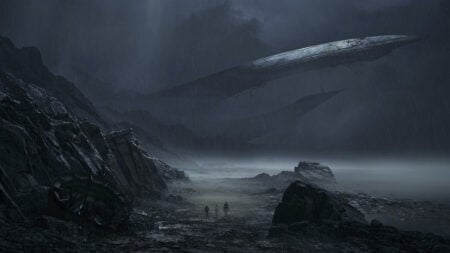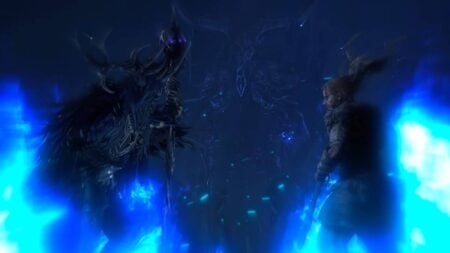Title: Battlefleet Gothic: Armada
Version Tested: PC
Available On: PC
Developer: Tindalos Interactive
Publisher: Focus Home Interactive
Genre: Real Time Strategy, Naval War
Official Site: https://www.battlefleetgothic-armada.com/
Release Date: April 21, 2016
Where To Buy: Steam
If there is one thing Battlefleet Gothic: Armada gets right, it is flavor. Going in, I had no knowledge of the Warhammer 40k universe, but I picked it up very quickly. The four different races have dramatically different playstyles, attitudes, and aesthetics however it did not take long to pick a favorite. Diving into this space-based, naval war game reveals mechanics very similar to the board games that inspired it. Depending on your point of view, the similarities to the tabletop Warhammer games can be Battlefleet Gothic: Armada‘s biggest strengths or weaknesses.
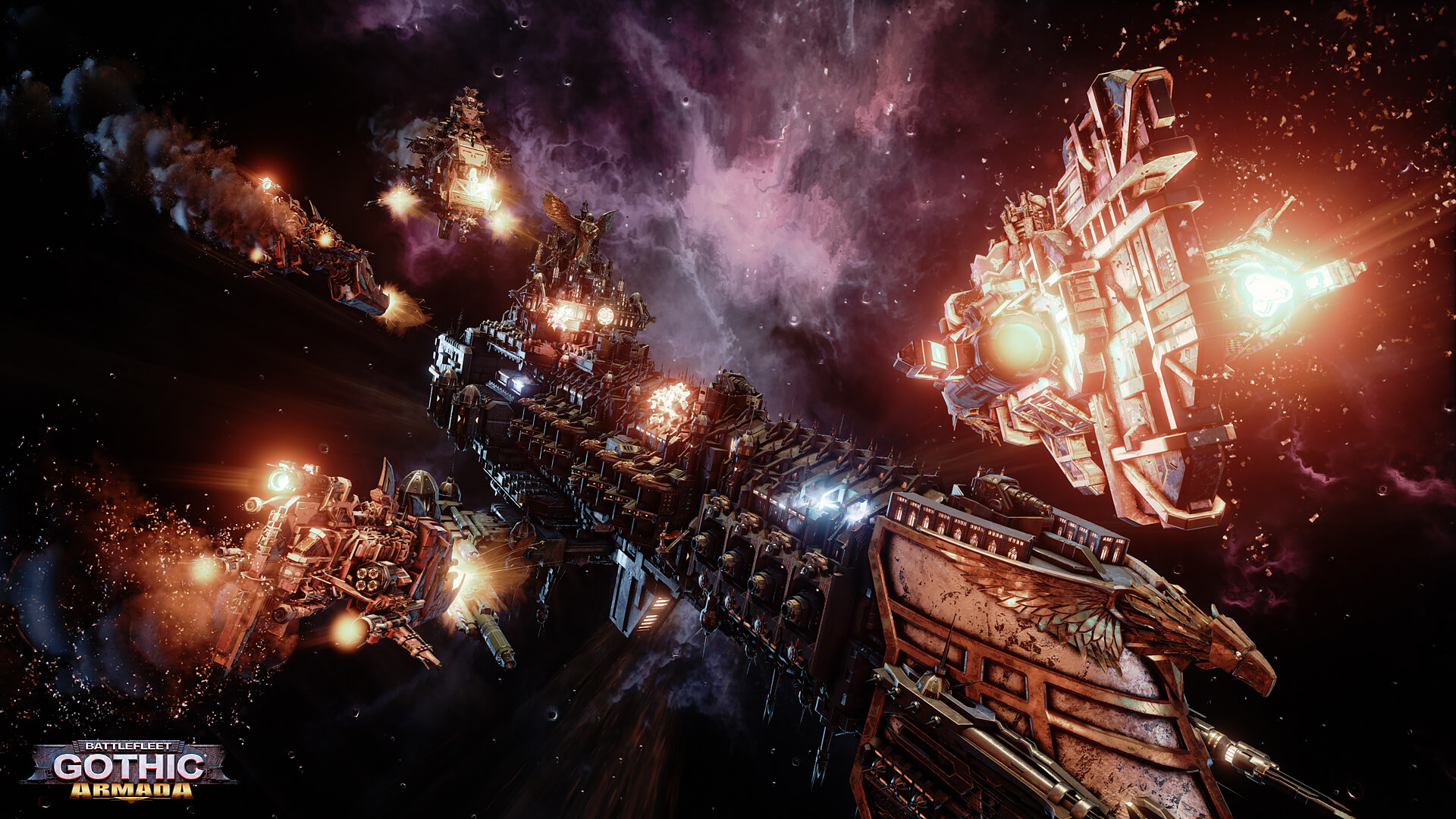
The first noticeable thing on loading up a campaign of Battlefleet Gothic is how grandiose everything is. Tech-Priests calmly relay statistics about cogitators. A sneering Commisar barks out orders to mutinous crew members. The voice acting is well-done, but the storyline seems so over the top that it comes off as silly to the uninitiated. As it develops, the story does bring you in, and the different characters start to develop and come to life. Then their ships explode, and they are thrown into the cold vacuum of space.
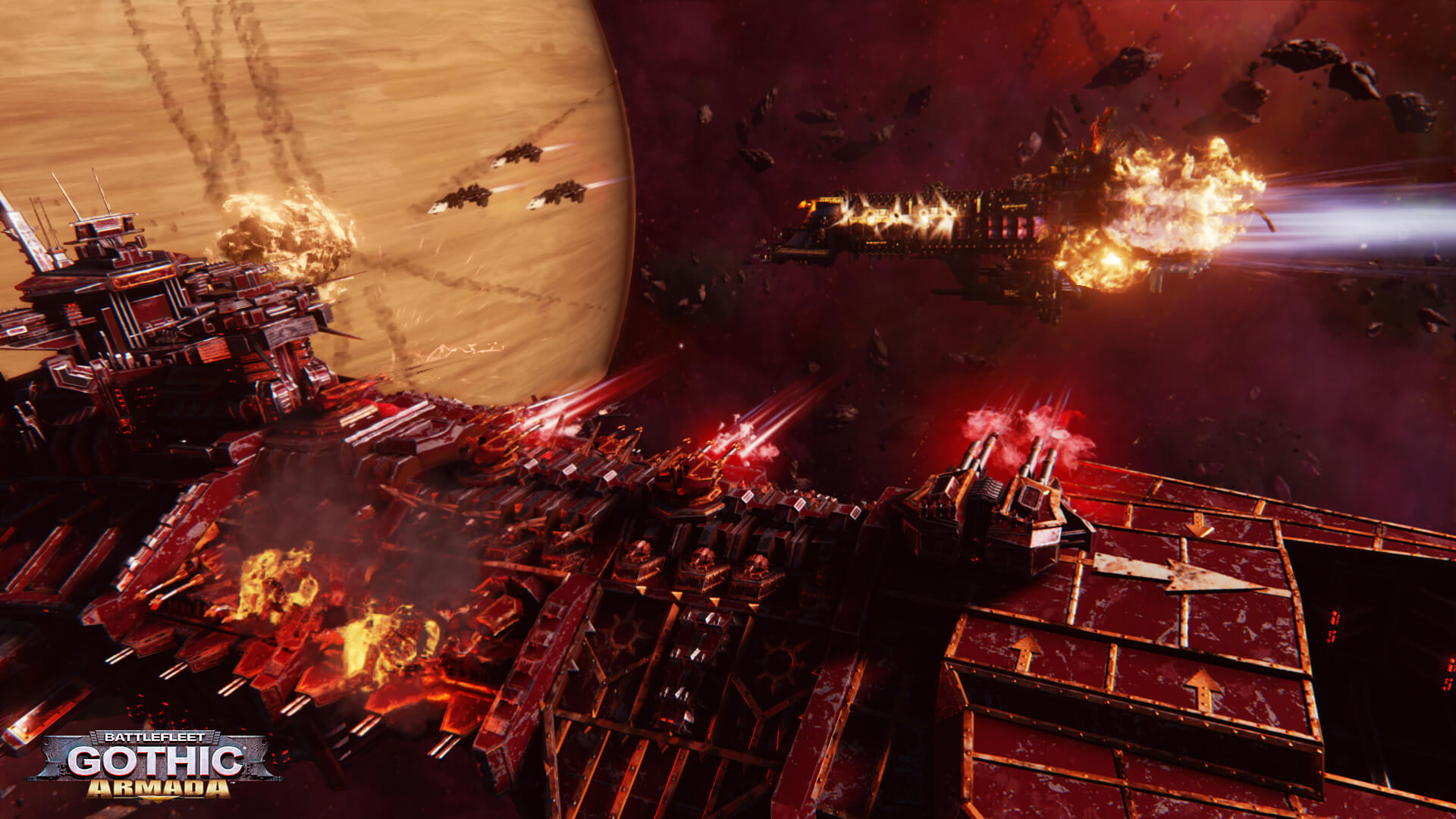
Graphically, it looks solid. The atmosphere is good, and certain aspects feel wonderful. Ramming your Ork ships straight into an enemy and watching as metal flies apart and ships grind against one another never gets old. There is something… lacking from the visuals. Since every battle is essentially a skirmish consisting of a handful of ships, there is a ton of empty space all around you. Certain animations are either buggy or rendered a bit odd, as things never quite gel with the surrounding space. You are generally zoomed out, as a lot of micromanagement is required, but if you move in to get a closer look (especially on lower graphical settings), you probably won’t be that impressed.
The set up of both the campaign mode and multiplayer mode is pretty similar. Multiplayer consists of a small variety of mission types, such as traditional deathmatch, escorting cargo ships, stealing data, etc. You can also skirmish the AI, or you can enter campaign mode. Campaign mode consists of a series of loosely connected skirmishes (all drawn from the same modes), with occasional twists for story missions. There is also a tactical map between missions where you can watch enemy movement, allocate resources, and decide where to strike next.
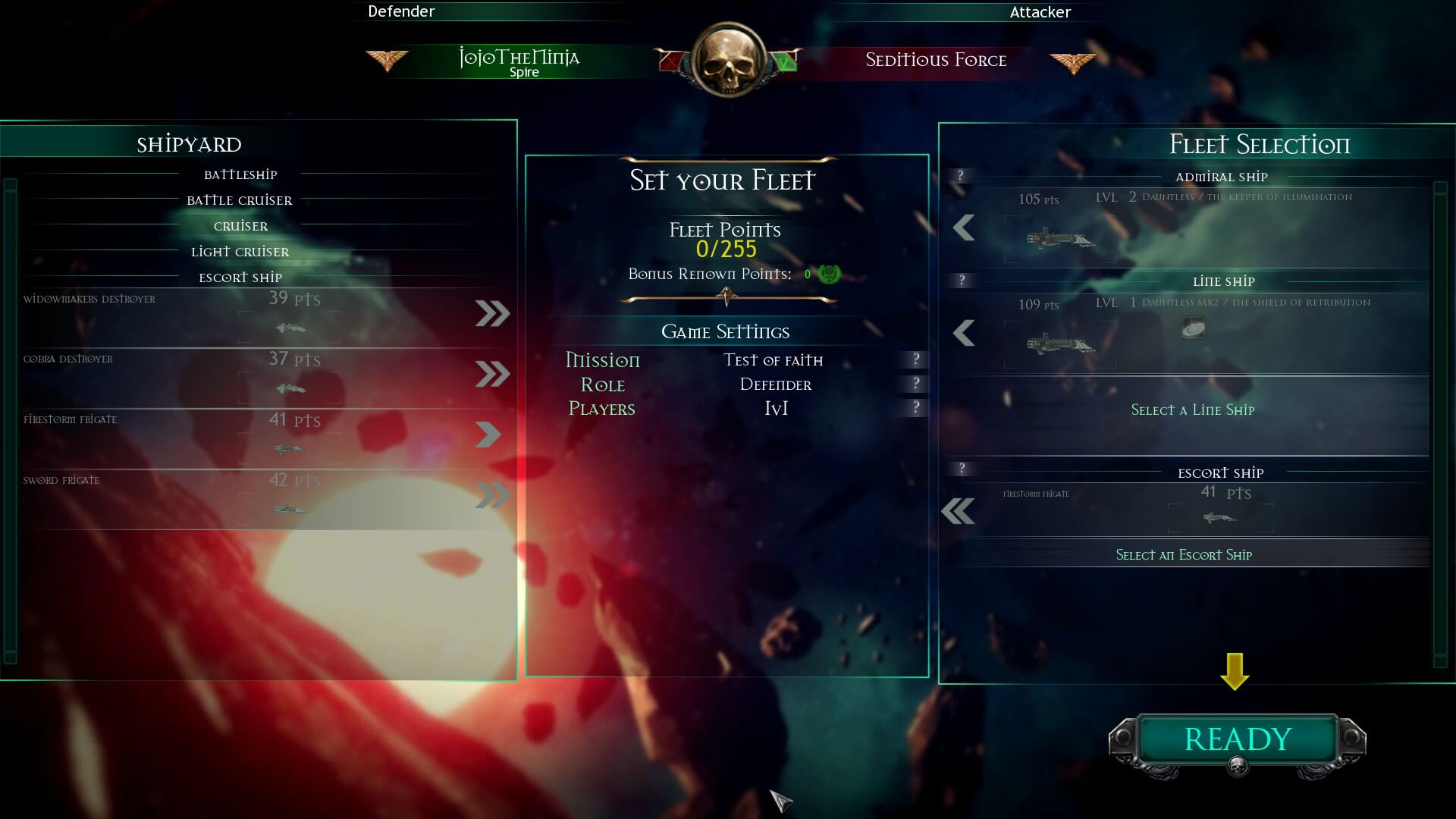
Within these skirmishes are where some of the issues start to crop up. First is the size and scale of the battles. Especially in the campaign, where the epic cutscenes inform you that the fate of the world is at stake and the apocalypse is coming, battles are generally no bigger than ten total ships. They last anywhere from five to twenty minutes. The sense of scale that these massive ships invoke is never echoed by the battles you fight.
The other big issue with Battlefleet Gothic: Armada is the lack of feedback that it offers. This is a game that has a ton going on behind the scenes, just like the tabletop franchise it is based on. However, when you are meticulously calculating statistics by hand, measuring distances with an actual ruler, and taking hours upon hour to finish one game; investing that time and energy is par for the course. For a skirmish that ends in eight minutes, the battle is often lost or won before that kind of analysis can take place. Did I make a brilliant tactical maneuver that won the day? Was it my upgraded crew? The ships I selected? Or was I just pitted against a weaker enemy this time out, and I would have won if I had autopiloted the entire round? Battlefleet Gothic: Armada never really clues you in.
That said, this game has a lot of positives as well. The four different races reward different styles, and you are sure to find at least one that suits you. The Orks are the Mad Max race. They plow straight ahead, trying to utilize overwhelming weapons and heavy armor to batter ships into submission. On the other end of the spectrum, the Eldar field the glass cannon approach, requiring extreme precision and tactical ability to offset their thinly armored ships with their powerful weapons. The Chaos and the Imperium tend to hang more in the middle, but each race offers different tactical options and approaches.
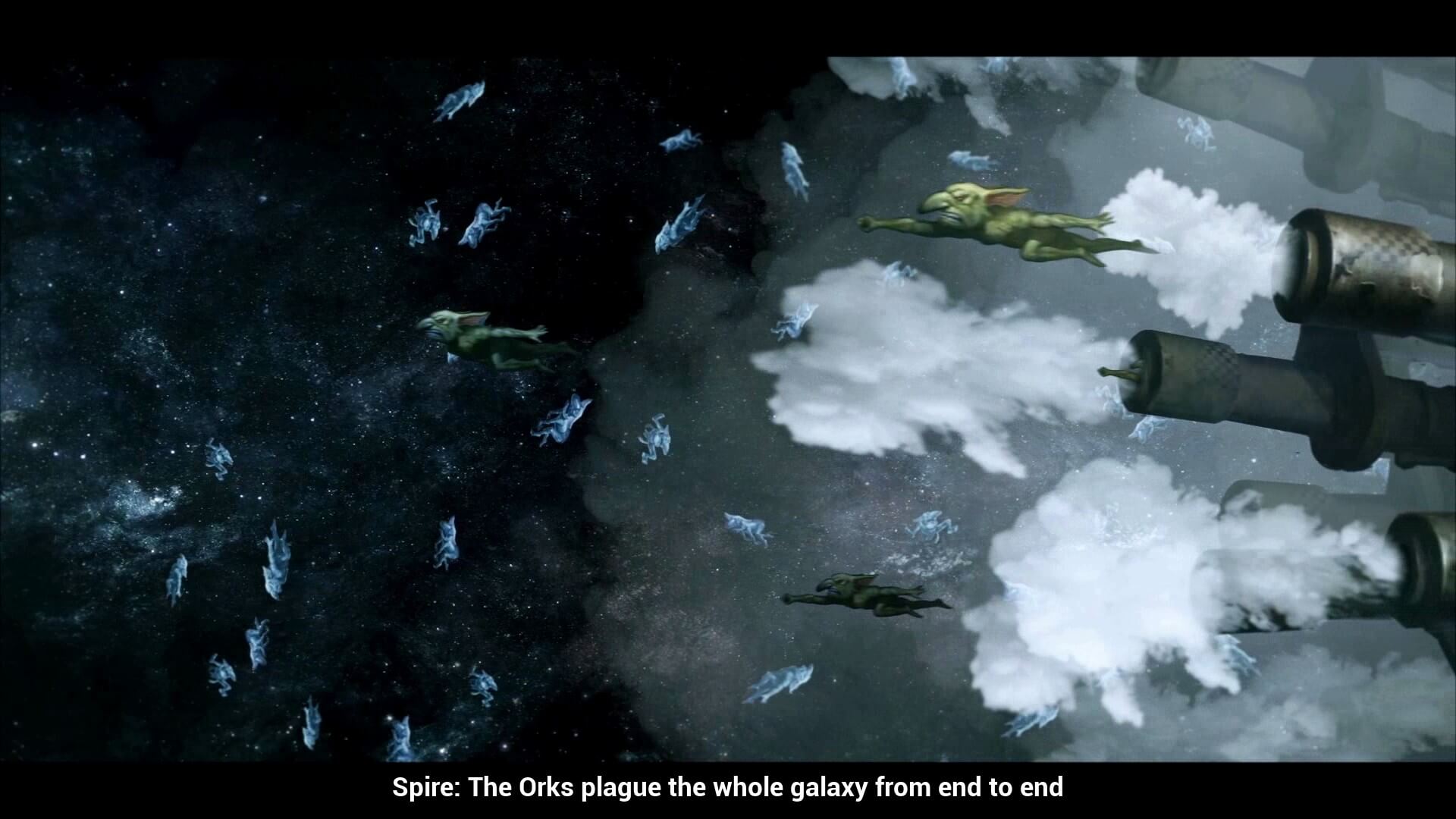
The level of customization of Battlefleet Gothic: Armada is a high level as well. Each major ship levels on its own, and different crew members, weapon systems, engines, and pretty much any other aspect of every individual ship can be leveled multiple times. In the campaign, as systems are won to your side or lost to the enemy, different resources fluctuate, increasing and decreasing your tactical options in the coming battles. During battles, each ship has individual tactics to set (such as engagement distance) and powerful special abilities, specific aspects of enemy ships can be targeted, boarding crews can be launched to sabotage enemy systems. As mentioned, there is a lot of stuff going on in this game.
Battlefleet Gothic: Armada is a tough game to give a score to. It will certainly not appeal to everyone. It plays slowly and it is not quite sure what it wants to be. It is stuck between two game styles, and thus makes it difficult to recommend to everyone. It much more resembles its tabletop counterpart than other, more traditional real-time strategy offerings. However, for a certain group, this game could be strategy nirvana. Tons of numbers, a variety of attack options, a deep, strategic setup, and a high skill ceiling may just be the perfect combo. After all, it is a great feeling when you hit that big red button, the engines come alive, the Ork airhorn sounds, and you ram through the enemy, breaking their capital ship into a million little pieces. Priceless.
[embedyt] https://www.youtube.com/watch?v=M3w3XeHpsis[/embedyt]
- Gameplay: Hybrid between a tabletop miniature game and a real-time strategy game. High level of micromanagement required.
- Graphics: Looks pretty from a distance, and different races have unique aesthetics. Loses some detail up close. Battlefields are fairly sparse.
- Sound: Grandiose voice acting is great. Weapon fire, explosions, and ships grinding against one another give battles lots of personalities.
- Presentation: Warhammer 40k universe is nicely used. Lots of customization, but can be difficult to tell what effect different options are having.
[review]

